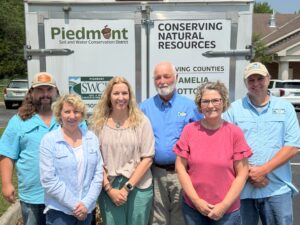5 Ways to Avoid Unleashing an Army of Invasive Plants in Your Area
How would you like to have the next invasive plant menace named after you? It happened to Alabama plantation owner Colonel William Johnson, who sowed Sorghum halepense seeds on river-bottom farm land circa 1840. The plant was already established in several US states a decade earlier, but Colonel Johnson’s name stuck, hence the name Johnson grass as the plant is commonly known today.
Johnson grass was introduced originally as prospective forage or accidentally as a seedlot contaminant. Exotic plant species that are introduced into an area by people are considered non-native. Many non-native plants have great economic value for agriculture, forestry, horticulture and other industries. Other non-natives have become invasive and pose a serious ecological threat. Biologists consider invasive plants to be one of the two greatest threats to native plants and animals. About 42 percent of the species on the U.S. List of Endangered and Threatened Species are at risk primarily because of non-native invasive plants.
Non-native invasive plants reproduce rapidly and have few if any natural controls to keep them in check. Invasives spread so rapidly that they muscle out most other plants, creating “monocultures” or stands of a single species that have little ecological value and greatly reduce natural biological diversity.
North America is divided up into 15 plant provinces. Virginia is in the Coastal Plain Forests provenance. Plants that originated in our province are native, or naturally occurring in our region without human intervention. Our native plants are perfectly adapted to the temperature, precipitation, elevation, soil types and other factors of our province. Plants native to our province have a complex inter-relationship with the animals, micro-organisms, butterflies, birds and other creatures with which they co-evolved.
Avoid unleashing an army of invasive plants and disrupting the intricate web of life by following the five recommendations below:
- Become familiar with the invasive and native plant species in our province by attending the Back to Nature in Your Landscape symposium scheduled for Saturday, September 28th, 2013. Registration information can be found at Heart of Virginia Master Gardeners’ website: www.hovmg.org or by calling the Piedmont SWCD at 434-392-3782 ext. 131.
- When selecting plants for landscaping, avoid using known invasive species. Ask for native alternatives at your nursery.
- Invasive Plants are likely to establish on disturbed lands. During construction or other land disturbing activities, quickly establish ground cover to stabilize slopes and ditches.
- If you already have invasive species on your property, consider removing them and replacing them with native species.
- When visiting a natural area, be alert for invasive species. If you see some, notify the agency or organization responsible for managing the land. Before you leave, avoid carrying “hitchhiking” plant material by taking time to brush seeds from clothing and shoes and remove plant material from boats trailers and other items.
